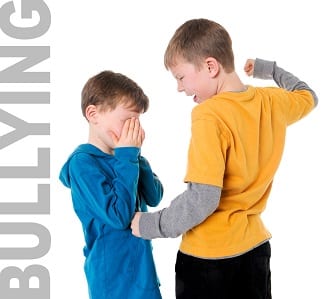 Across the media, bullying has been portrayed as a part of life, even a rite of passage, and put in a comical light. We can probably admit to laughing with the stereotypical bully in comics and movies. Nevertheless, the truth about bullying reveals that it is far from comical.
Across the media, bullying has been portrayed as a part of life, even a rite of passage, and put in a comical light. We can probably admit to laughing with the stereotypical bully in comics and movies. Nevertheless, the truth about bullying reveals that it is far from comical.
Effects
About 80 million children attend private and public schools K-12 in the U.S. and 20-25 million are reported as being bullied each year. Reportedly 200,000 children fear being bullied each day enough to miss school. 400,000 children have either attempted or talked about committing suicide due to bullying, and 7,000 children actually committed suicide as a result of serious bullying. These statistics are reported on cops.usdoj.gov, keepschoolssafe.org and bullypolice.org.
Definition
The Stop Bullying Now Foundation defines bullying as “physical, verbal or psychological attacks or intimidation against a person who cannot properly defend him or herself. It includes two key components: repeated harmful acts and imbalance of power.” Examples include “hitting, threatening, intimidating, maliciously teasing and taunting, name-calling, making sexual remarks and stealing or damaging belongings or more subtle, indirect attacks such as spreading rumors or encouraging others to reject or exclude someone.”
An epidemic
Bullying is currently the worst epidemic in the country according to Lowell Levine, founder and chief executive officer of the Stop Bullying Now Foundation. “I always had a strong passion for education and children,” reflected Levine, “and heard about bullying as an out of control epidemic and the biggest fear among parents and grandparents. I did a major investigation about the problem.”
He founded the Stop Bullying Now Foundation to address the bullying epidemic throughout our schools today. Its primary objective is to raise enough funds to create an anti-bullying program for schools across the entire country, starting with Florida’s 67 school districts. The foundation currently educates parents and caretakers at local churches and synagogues.
Equipping parents
Levine recently gave a presentation at the Miramar Cultural Center for the Arts in August. Although his foundation is based in Palm Beach Gardens, Levine travels to Broward County since both counties experience the same problem. Levine’s presentations are concise to allow parents time to ask questions and become well-informed about bullying. He reveals the red flags in a child’s behavior that indicate when bullying has already taken place. His presentations aim to equip parents to prevent and remedy bullying problems.
Warning signs
The red flags of bullying may include changes in a child’s typical behavior and routine. For example, if a child develops different eating or sleeping habits, isolation, difficulty studying, lower grades, apathy toward school in general or anxiety, then there is a possibility that the child has become a target of bullying. Parents and caretakers should contact Levine or school authorities immediately if they suspect bullying. Although these changes could also be red flags of other types of abuse, the urgency of getting to the root of them is the same.
Conducting presentations at schools in the past, Levine said they have been less effective in educating parents about the bullying epidemic for two reasons: the audience is mostly children and some schools fear appearing uneducated or incapable of dealing with the bullying problem themselves.
Levine is a responsive advocate for bullied children. When a student or parent calls, he instructs them on how to improve the situation at school. He also tells them to inform the school that he is involved. If the school doesn’t comply or the situation doesn’t improve, then Levine gets involved directly with the school utilizing his knowledge of the problem and intervention.
Fueled by fear
According to Levine, only 20 percent of children speak up about being bullied due to fear. In addition, he claims half “of all bullies have serious mental health problems.” To dig deeper, two-thirds of those targeted by bullying become bullies themselves, likely as a way of coping with it. Bullying also happens outside of school (at home, for example) since it is really a combination of abuse and harassment. Maybe bullies fear not being accepted unless they assert some form of control. So it appears that fear is at the heart of bullying on every side.
As Apostle Paul says in 1 Corinthians 12:9, Jesus’ strength is made perfect in our weakness. We will all suffer hardships in this life, but we were created for relationship – with Jesus and with each other – to share our burdens. Let us not suffer in silence, but let us reach out instead.
For more information, visit www.stopbullyingnowfoundation.org. Sasha Richardson is a freelance writer and can be reached at [email protected].

Comments